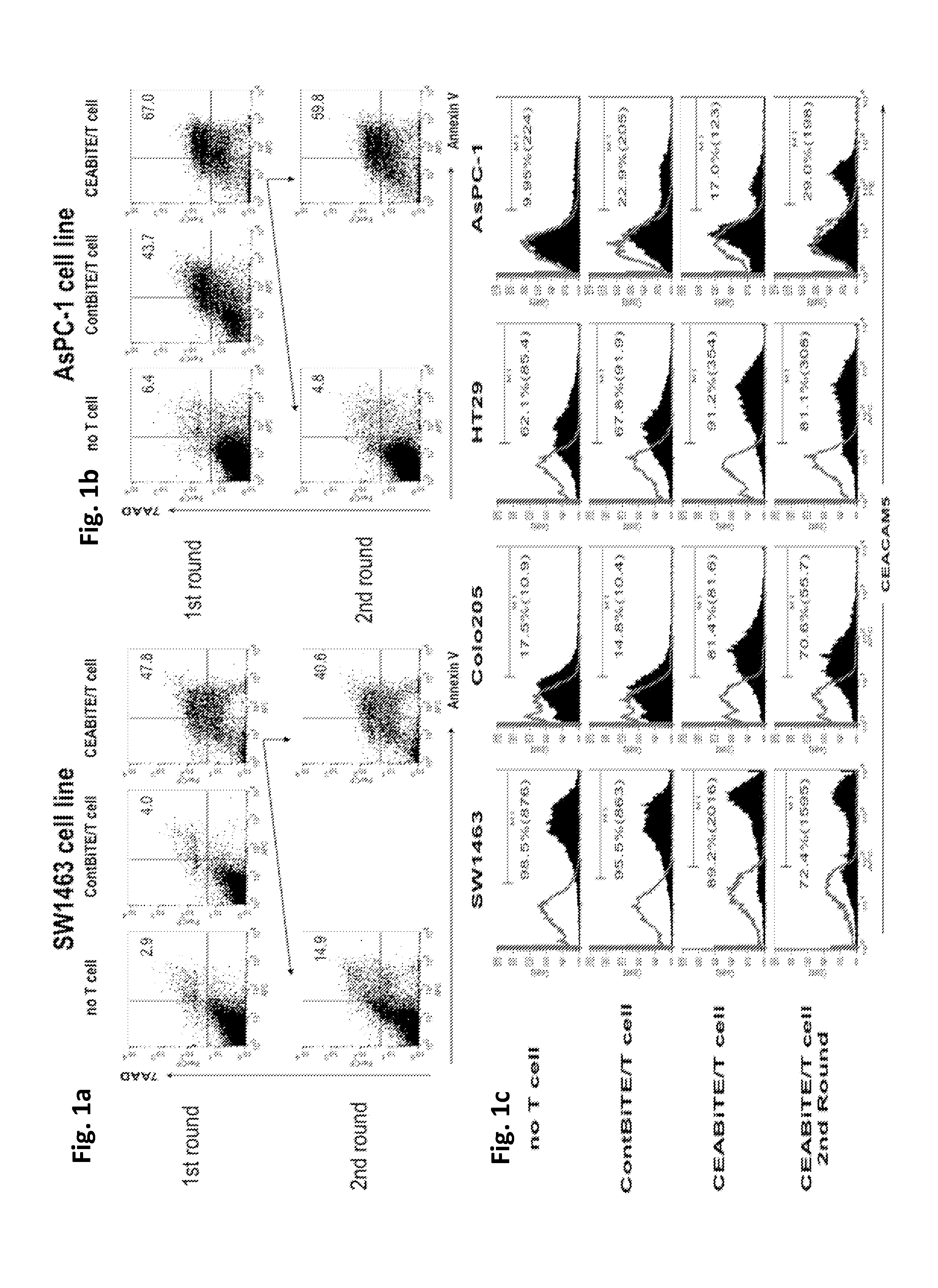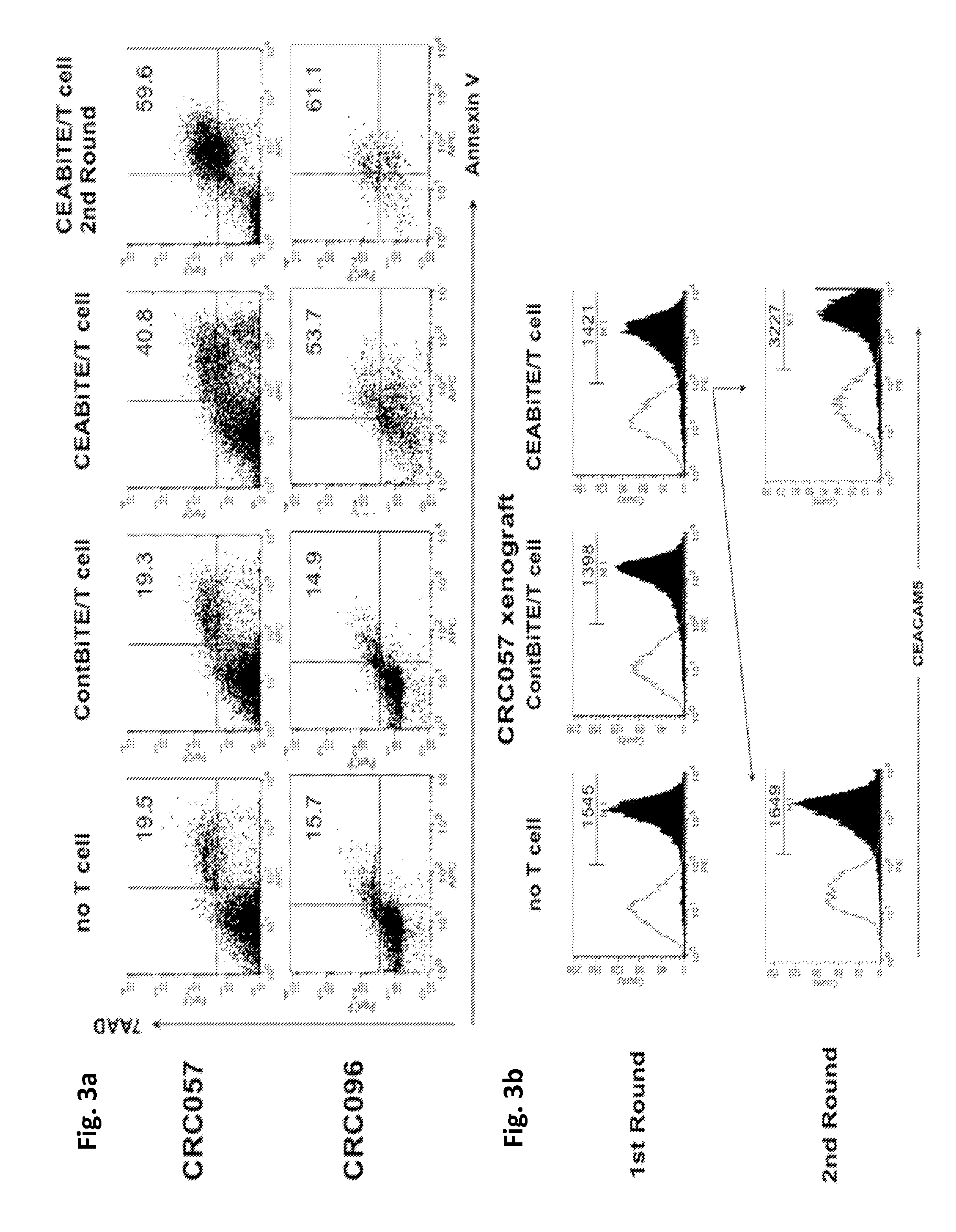Compositions And Methods For Modulating And Redirecting Immune Responses
a technology of immune response and composition, applied in the field of compositions and methods for modulating and redirecting immune responses, can solve the problems of cancer continuing to be a major global health burden, unmet, and difficult to mount tumor-specific t-cell responses in cancer patients,
- Summary
- Abstract
- Description
- Claims
- Application Information
AI Technical Summary
Benefits of technology
Problems solved by technology
Method used
Image
Examples
example 1
[0299]Early blockade of the PD1 / PD-L1 pathway maximizes CEA / CD3-bispecific T-cell-engaging (BiTE) antibody-mediated cytotoxicity.
[0300]Recently, expression of PD-L1 by tumors has been shown to modulate function of activated T cells expressing PD1. Therefore, we explored whether T-cell exhaustion was observed with repeated MEDI-565 exposure and if so, by what mechanism. Furthermore, we assessed the effect of the PD1 / PD-L1 immune checkpoint on T cell cytotoxicity. Finally, we attempted to restore T-cell cytolytic activity after previous MEDI-565 mediated attack with anti-PD1 and anti-PD-L1 antibodies.
[0301]The carcinoembryonic antigen (CEA) / CD3-bispecific T-cell-engaging (BiTE) antibody MEDI-565 (a CEA-BiTE, aka MT111 and AMG 211) simultaneously binds to T cells via CD3 and to tumor cells via CEA. We performed serial co-cultures of tumor cells with human T cells in the presence of CEA-BiTE. This enabled the study of PD1 and PD-L1 blockade and its effect on T cell survival and T cell-m...
PUM
| Property | Measurement | Unit |
|---|---|---|
| time | aaaaa | aaaaa |
| time | aaaaa | aaaaa |
| concentration | aaaaa | aaaaa |
Abstract
Description
Claims
Application Information
 Login to View More
Login to View More - R&D
- Intellectual Property
- Life Sciences
- Materials
- Tech Scout
- Unparalleled Data Quality
- Higher Quality Content
- 60% Fewer Hallucinations
Browse by: Latest US Patents, China's latest patents, Technical Efficacy Thesaurus, Application Domain, Technology Topic, Popular Technical Reports.
© 2025 PatSnap. All rights reserved.Legal|Privacy policy|Modern Slavery Act Transparency Statement|Sitemap|About US| Contact US: help@patsnap.com



